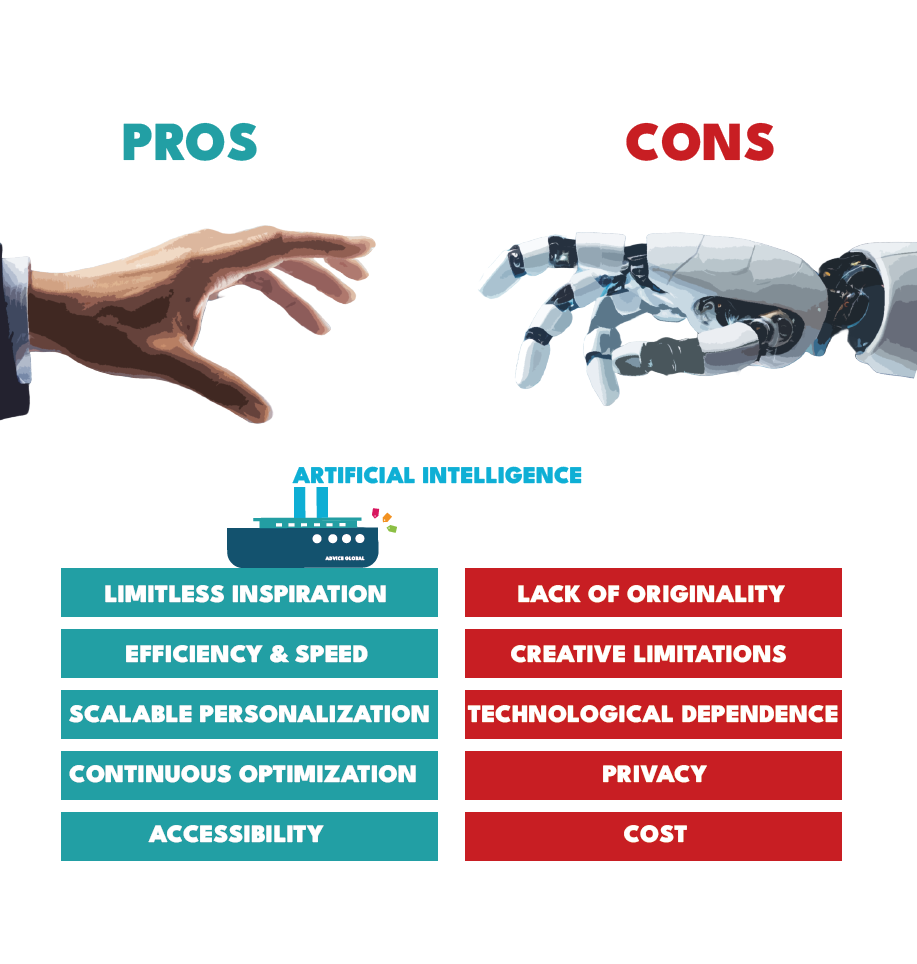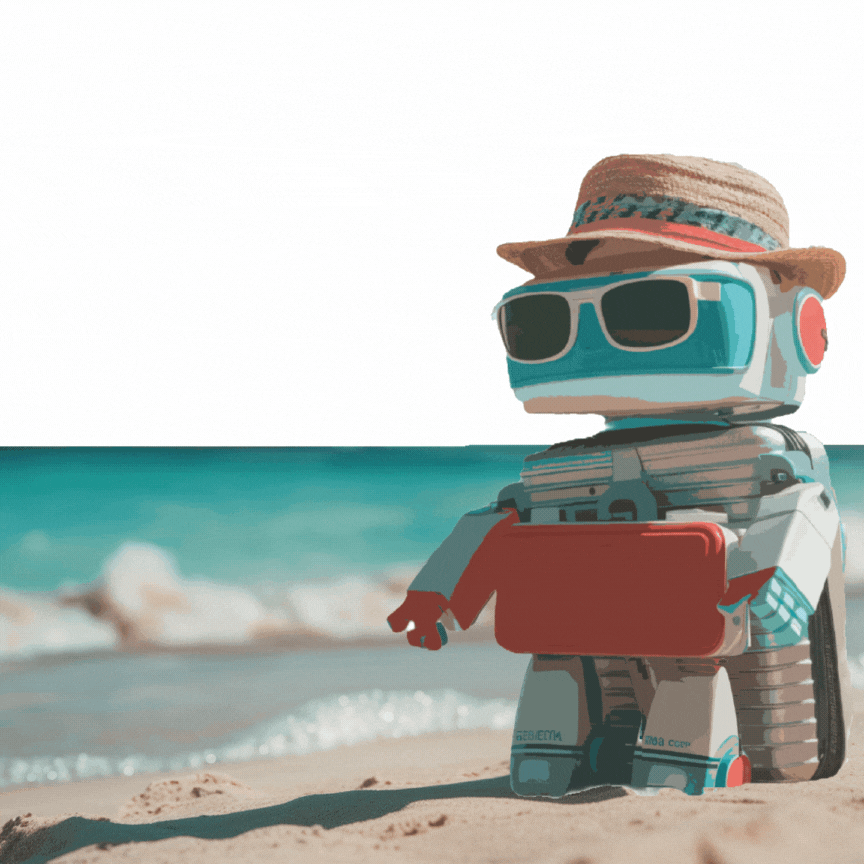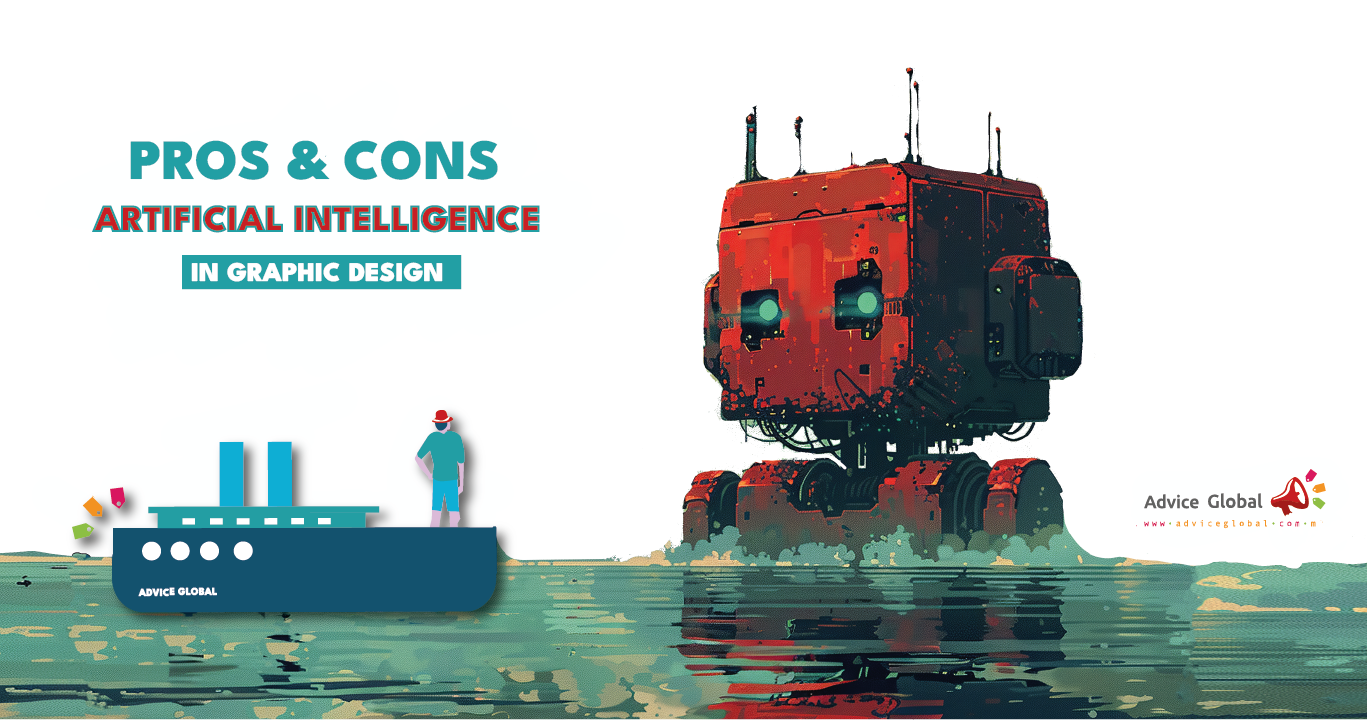“BEST ADVERTISING AGENCY”
PROS AND CONS OF:
USING ARTIFICIAL INTELLIGENCE FOR GRAPHIC DESIGN
Artificial intelligence is like a modern magician, capable of conjuring virtual realities and unraveling the mysteries of the data universe. It’s the chef of information, blending data ingredients with algorithmic recipes to create surprising dishes of knowledge. It’s the digital artist, sculpting abstract forms of information into landscapes of innovation and discovery. In short, artificial intelligence is the creative genius of the digital age, endowed with the ability to transform information into art and to open new frontiers in human imagination.
It facilitates many everyday tasks and work-related activities, but what are the pros and cons of using it? We’ll tell you in this blog!
PROS
-
- Limitless Inspiration: Artificial intelligence can generate creative ideas and design suggestions that may not have been considered by human designers, expanding the spectrum of possibilities.
-
- Efficiency and Speed: AI algorithms can automate repetitive and tedious tasks, allowing designers to focus on more creative aspects of the design process and speeding up project delivery times.
-
- Scalable Personalization: AI can analyze user behavior data and generate personalized designs in a scalable manner, enabling brands to offer more relevant and engaging experiences to their audience.
-
- Continuous Optimization: Through machine learning, AI can analyze the performance of past designs and automatically adjust future designs to maximize effectiveness, leading to continuous improvement in the quality and efficacy of design.
- Accessibility: AI can make graphic design more accessible to people with little design experience, offering intuitive tools and virtual assistants that facilitate the creation of high-quality visual content.

CONS
- Lack of Originality: There’s a risk that excessive use of artificial intelligence in graphic design could lead to the homogenization of designs, as generated ideas may lack the originality and uniqueness of human work.
- Creative Limitations: Although AI can generate creative ideas, its ability to understand human cultural, emotional, and social context remains limited, resulting in designs that lack sensitivity and cultural relevance.
- Technological Dependence: Excessive reliance on artificial intelligence in graphic design could lead designers to lose fundamental manual and creative skills, affecting their ability to innovate and solve problems creatively.
- Privacy and Ethics: The use of AI algorithms in graphic design raises concerns about data privacy and ethics in the collection and use of personal information for design customization, potentially leading to user distrust.
- Cost and Accessibility: The implementation of artificial intelligence technologies in graphic design can be costly, limiting accessibility for small businesses and independent designers with limited budgets.

When considering these pros and cons, it’s important to find a balance between the use of artificial intelligence and human creativity in graphic design to fully harness the capabilities of both.
Author: Ainhoa Prieto Sanchez


